quantumphysics
Latest

Quantum 'compass' promises navigation without using GPS
GPS is vital to modern navigation, but it's extremely fragile. Never mind coverage -- if a satellite fails or there's a jamming attack, it quickly becomes useless. Scientists may have a much more robust answer, though. Scientists have demonstrated a "commercially viable" quantum accelerometer that could provide navigation without GPS or other satellite technology. The device uses lasers to cool atoms to extremely low temperatures, and then measures the quantum wave properties of those atoms as they respond to acceleration.

Quantum entanglement on demand could lead to a super-secure internet
If you're going to create virtually unbreakable quantum networks, you need to create quantum entanglement so that particles, and thus pieces of data, are intertwined at long distances. There hasn't been a reliable way to make that happen, however, until now. Scientists at TU Delft have produced the first entanglement on demand -- that is, they can reliably trigger the quantum pairing effect and make it last long enough to be meaningful. The effect only worked across two nodes and a modest distance of about 6.6 feet, but it raises the possibility of a quantum internet that's far more secure than what you see today.

Senate bills would make quantum computing a priority
There's a worldwide race to dominate quantum computing, and two new pieces of legislation might help the US claim the lead. Senator Kamala Harris has introduced the first, the Quantum Computing Research Act, to provide a "competitive edge" in development. It would create a Quantum Computing Research Consortium in the Department of Defense to coordinate progress, offer grants and oversee initiatives. The measure would boost the economy, create jobs and bolster national security, if you ask Harris.
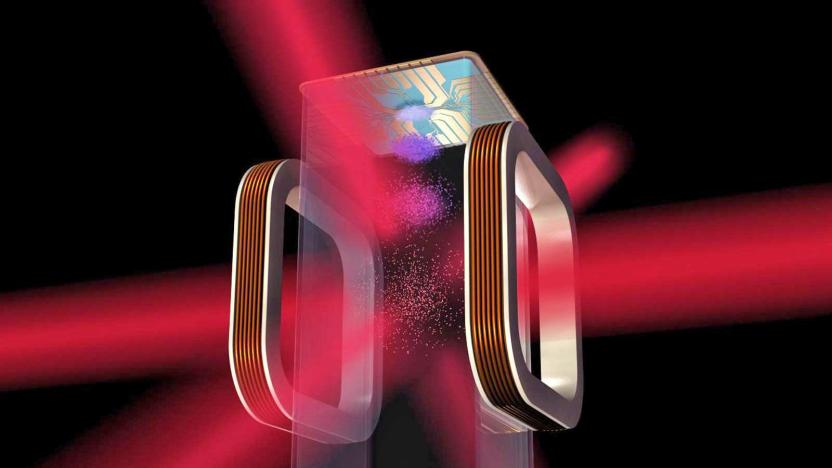
NASA will create coldest place in the universe to study quantum physics
It's hard to study quantum behavior on Earth. You can amplify the effects of quantum mechanics by zapping groups of specific atoms (Bose-Einstein condensates) with lasers that drop their temperature to near absolute zero, but that only works for fractions of a second before gravity invariably takes over. NASA's solution? Create the coldest known place in the universe. The agency just launched the Cold Atom Lab, a box that takes advantage of microgravity aboard the International Space Station to keep condensates in that ideal state for much longer.
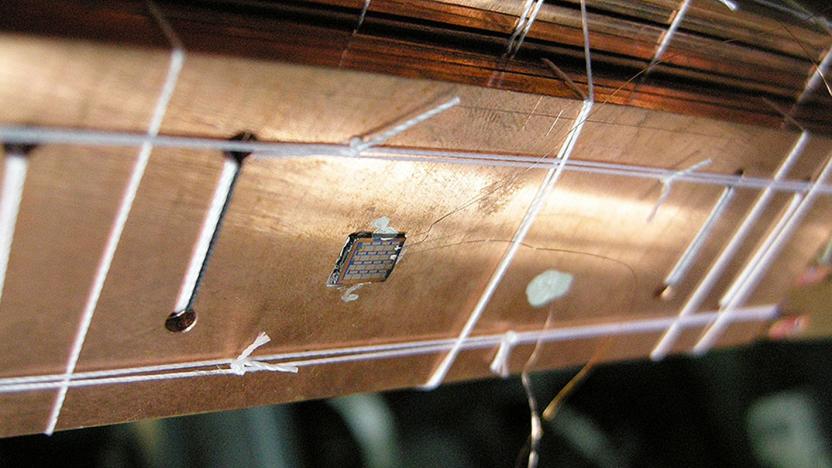
World's coolest chip runs at near absolute zero
How do you find out what happens to physics near absolute zero (aka 0 kelvin), the temperature where particle motion virtually stops? Scientists at the University of Basel might have just the device to do it. They've developed a nanoelectronics chip that they can successfully cool to a record-setting, bitterly cold 2.8 millikelvin. The trick involved a clever use of magnetic fields to eliminate virtually all sources of heat.
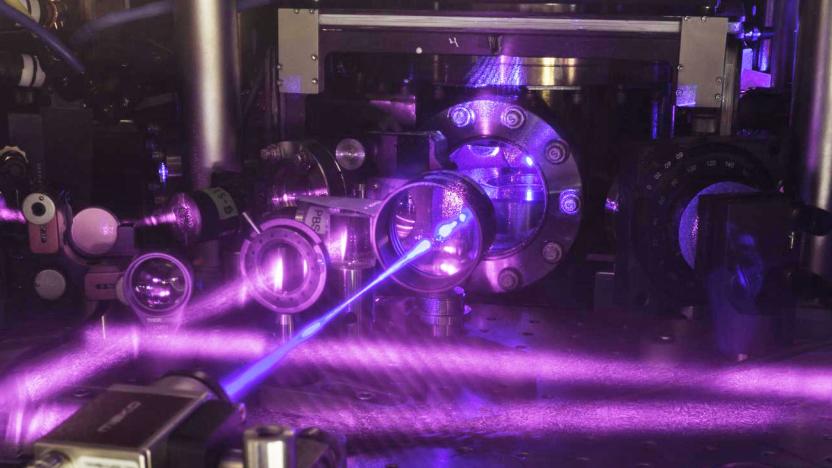
Researchers have increased atomic clock precision yet again
Researchers have pushed the precision and stability of atomic clocks to increasingly greater levels over the last few years. A big advancement was the introduction of optical lattices, lasers which essentially quarantine individual atoms and boost accuracy by keeping them from moving around and interacting with each other. Scientists at the National Institute of Standards and Technology (NIST) have used this method to develop clocks so stable, they can keep extremely precise time for thousands and even billions of years. The team's most precise clock was created in 2015, but research published this week in Science describes a new version that just took that top spot.
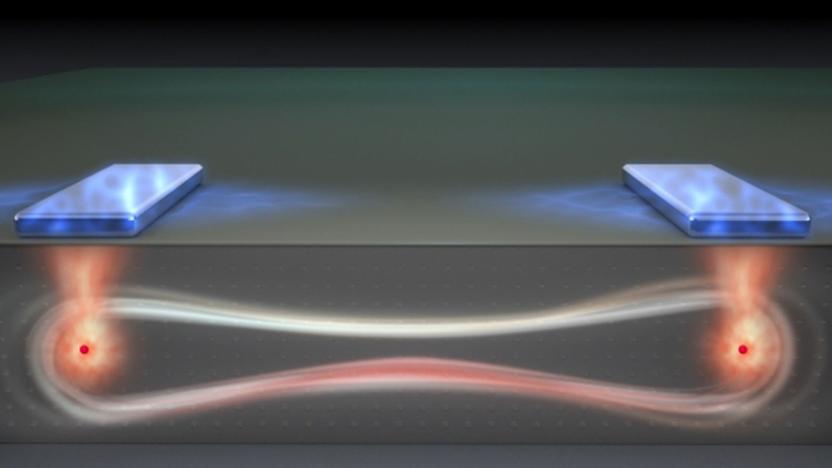
'Flip-flop' design makes quantum computers more affordable
One of the greatest challenges in quantum computing is... well, making the computers. You may need exotic manufacturing techniques just to handle the very exacting requirements, such as positioning the atoms in quantum bits in exact positions at close distances (to make quantum entanglement happen). However, that might not be a problem going forward. Australian researchers have developed a new chip design that could be built using the same silicon technology that you see in use today.

Quantum 'hashtags' may prove the existence of a strange particle
Hashtags could soon be useful for a lot more than fostering discussion on your favorite social network. Researchers have developed a hashtag-shaped quantum chip (shown below) that could confirm the existence of the oddball Majorana particle, which exists as both matter and antimatter at the same time. The team has learned that laying indium phosphide nanowires in the familiar '#' shape creates a closed circuit that lets the particles pass by each other and braid, rather that annihilating each other like they would on a single wire. Think of it like creating streets with intersections instead of a one-lane road -- the 'traffic' can actually get around without collisions.
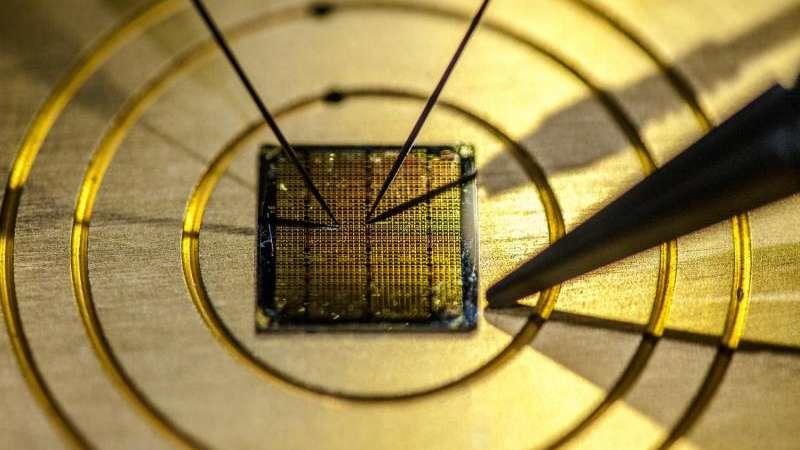
Researchers use quantum physics for counterfeit detection
Scientists from Lancaster University have developed a foolproof anti-counterfeiting measure using a combination of quantum physics and smartphone technology. Previously, the team created unique atomic-scale IDs based on irregularities found in 2D materials such a graphene -- irregularities which, unlike current anti-counterfeiting technology such as holograms, are impossible to clone. Quantum physics amplifies these irregularities and, once turned into a tag, makes it possible to "fingerprint" objects.

Silicon-laced diamonds could lead to practical quantum computers
Scientists already believe that diamonds could be a solid foundation for practical quantum computers. You can use atom-scale defects in diamond to store quantum bits that hold contradictory data (say, both on and off) in a way that lets you read the data without the risk of changing it. But there's a problem. The most common defect, where nitrogen atoms replace carbon atoms, emits such a broad range of light that it's too inaccurate to be useful. However, a team of researchers may have a way to keep those inaccuracies to a minimum: slip in some silicon, which emits a much narrower range of light.

600-year-old starlight addressed a loophole in quantum theory
Quantum entanglement, where two particles are separated by space and yet inextricably linked by the laws of quantum mechanics, has already been proven to be real, but something called the "freedom-of-choice loophole" has so far made it impossible to definitively prove the theory. That is, until physicists from the University of Vienna and MIT addressed that loophole with a blast of 600-year-old starlight.

Scientists catch a classic quantum experiment on camera
If you know a bit about quantum physics, you've likely heard of the Schrödinger's Cat concept used to explain superpositions: a cat in a box with a poison flask is at once alive and dead until you look inside. Researchers have produced this oddball state in the lab before, but they're now using it to create the most detailed X-ray movies of molecules they've seen so far. A team at the SLAC National Accelerator Laboratory first blasted an iodine molecule with an optical laser, splitting the molecule into simultaneous excited and relaxed states. When the scientists hit the molecule with X-rays afterward, the light scattering off of both states created an X-ray hologram showing the excited state. After that, the SLAC group only had to capture enough of these holograms to create a movie.

Physicists create a 'quantum ruler' to measure the universe
A group of physicists from the Russian Quantum Center and the Moscow Institute of Physics and Technology have come up with a new method of creating a special entangled quantum state, one that could be used as "a high-precision ruler" for measuring large distances with subatomic precision. The technique, described in a new study in the journal Nature Communications, could be used to increase the sensitivity of optical interferometers like the ones used by the LIGO project to detect gravitational waves.
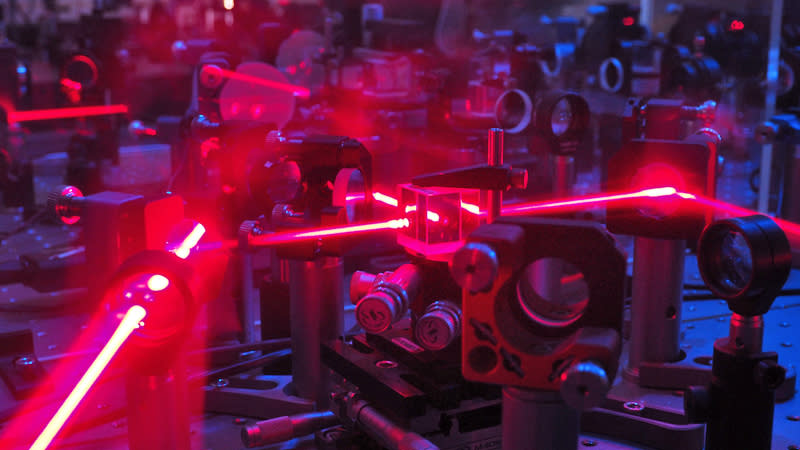
AI made quantum experimentation easier for our feeble brains
Is the cat in the box alive, dead or... alive-dead? Questions like the one posed by the Schroedinger's Cat thought experiment have vexed mere mortals for far too long, and the scientific community knows that quantum mechanics is pretty tough to wrap our human brains around. So, a group of researchers at the University of Vienna developed an algorithm to help speed the quantum experimentation process along and make it altogether easier, according to APS Physics. It's dubbed Melvin and it was used in a quantum optics experiment to arrange mirrors and beam splitters to make quantum-entangled photons. Photons in Greenberger-Horne-Zeilinger states, specifically.

Quantum computer revolves around just 5 atoms
It's no mean feat to find the factors of a very large number -- even a supercomputer can take years to find all the multipliers. However, MIT researchers have found a way to clear this massive hurdle. They've built a quantum computer that discovers number factors using just five atoms. Four of the atoms are turned into logic gates using laser pulses that put them into superpositions (where they maintain two different energy states at once), while the fifth atom stores and delivers answers. The result is a computer that not only calculates solutions much more efficiently than existing quantum systems, but scales relatively easily. Need to get the factors for a larger number? Introduce more atoms.

DARPA wants help hunting for individual photons
America's mad science division wants the ability to see the building blocks of light, but needs the scientific community's help to do so. The agency is launching one of its famous open calls for knowledge, this time under the auspices of the Fundamental Limits of Photon Detection Program. The project is designed to bring together theoretical scientists and engineers to see if it's possible to build an accurate photon detector. In an ideal world, DARPA wants a gadget that can correctly pick out individual photons -- a technology that would prove beneficial in any number of technologies.

Scientists create quantum entanglement at room temperature
Quantum entanglement, where two particles are inextricably linked, is a real thing. However, creating that odd behavior has been extremely difficult so far -- you have to cool things down to near absolute zero to pull it off on a significant scale. Or rather, you did. Researchers have successfully produced macro-scale quantum entanglement at room temperature through the one-two combo of an infrared laser (which aligned magnetic states) and electromagnetic pulses (for the actual entanglement). The experiment only included enough electrons and nuclei to fill the space of a blood cell, but that still amounts to linking "thousands" of particles.

Scientists confirm a cornerstone of quantum computing
Quantum physics theory has an odd but fundamental quirk: atoms in a quantum state aren't supposed to move as long as you're measuring them. It sounds preposterous, but Cornell University researchers have just demonstrated that it's real. The team noticed that the atoms in an extremely cold cloud of Rubidium gas wouldn't move around as long as they were under observation. The more often scientists used a laser to measure the behavior, the less movement they saw. They had to either tone the laser down or turn it off entirely for the atoms to shuffle around freely.

Scientists have found a way to connect quantum electronics together
Scientists have found a way to connect quantum devices together, transmitting entanglement — and crucially the quantum properties that could deliver the next-generation of electronics. Sounds boring and complicated (it's not too complicated), but it's important, we promise. It all involves the interconnect, the part of electronics that links one component to another. As explained by Technology Review, this can often take up most of the space on silicon chip and the limits of the interconnect often form the limits of a computing system's performance. At least, for now.

Basics of quantum teleportation now fit on a single chip
Until now, quantum teleportation (that is, sending quantum data from one place to another) has required a room-filling machine. That's not going to usher in a brave new era of quantum computing, is it? However, a team of British and Japanese researchers has shrunk things down to a much more reasonable size. They've stuffed the core optical circuits for quantum teleportation into a single silicon chip that's just slightly longer than a penny -- in contrast, an experimental device from 2013 was nearly 14 feet long. While scientists built the chip using "state-of-the-art nano-fabrication," it should be more practical to make than its ancestors, which took months.





